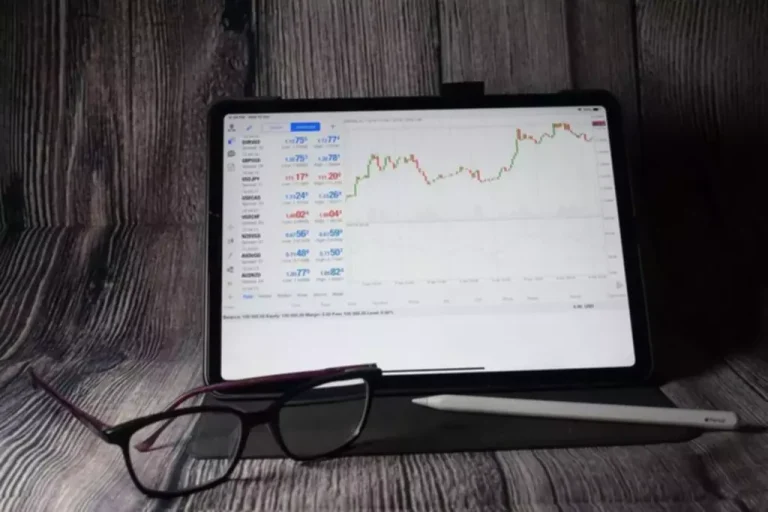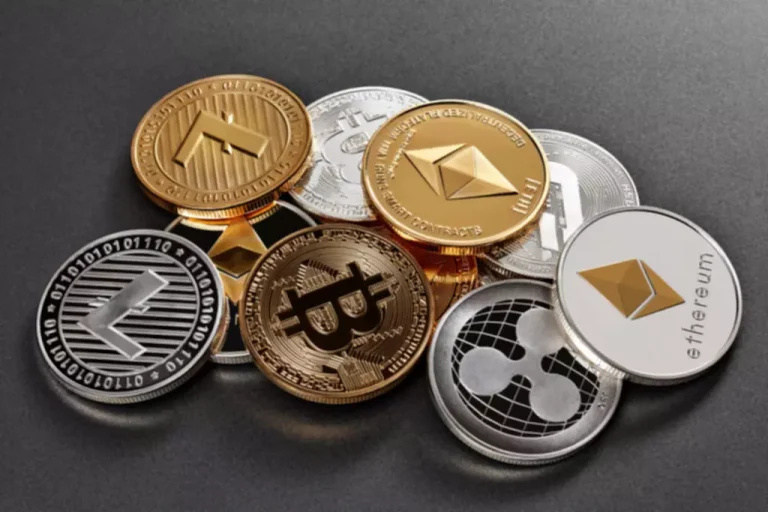Content
While trust in the major networks, such as Bitcoin, Ethereum, and Cardano is growing as they recover from repeated market cycles, newer currencies do not have that trust. This is also fuelled, in part, by the long list of cryptocurrencies and platforms that have folded, from the infamous BitConnect to Emercoin. To date, according to morbid tracker Coinopsy, nearly 2,400 dead cryptocurrencies. Bitcoin has attracted the attention of retail and institutional investors, increasing demand fueled by media coverage, investing “experts,” and business owners Payment gateway touting the value a bitcoin has and will have. Bitcoin has also become popular in countries with high inflation and devalued currencies, such as Venezuela.

ADA leads in crypto market recovery ⬆️
Market sentiment can crypto volatility turn bearish due to factors like missed price expectations or concerns about the sustainability of Bitcoin’s growth trajectory. Players in the cryptocurrency market are millions, in the cryptocurrency market, supply and demand are very important, and millions are involved. The combination of this market about the cryptocurrency market is one of the reasons that prices are so volatile in the cryptocurrency market. Each of these factors can have a disproportionate impact on price movement. With no central authority or governing body, market movements are often the result of decentralized actions by individuals across the globe, making collective mood and behavior challenging to gauge.
Governments try to regulate the use of bitcoin
These large https://www.xcritical.com/ and often hard-to-trace holdings can enable market manipulation and prevent prices rising beyond a certain threshold (as a large price rise could cause these whales to sell off large volumes of their holdings). Many cryptocurrencies use blockchain technology – a decentralised ledger of all transactions that take place – to store and distribute digital information. They have value because they can be exchanged for real-world goods and digital assets, and many can be considered a store of value. Cryptocurrency, and bitcoin in particular, have always been trending topics in social and mass media.
Bitcoin’s Rollercoaster Ride: The Cryptocurrency’s Climb Back to $30,000
In fact, from 2020 to 2024 (chosen to capture at the most recent four-year cycle in bitcoin), bitcoin has been three to nearly four times as volatile as various equity indices, as shown in the chart below. Similarly, large amounts of bitcoin are owned by individual people or groups. If a large holder of bitcoin decides to sell, then the supply of the currency increases significantly in a short time. Assets which have lower market depth will require smaller amounts of capital to have a large impact on the market. Bitcoin, which has increased in value by approximately 50x in the last five years, is considerably more volatile than most other assets, such as debt or equity. Volatility may indicate the potential for above-average returns on a trade, but it is also one of the main indicators of risk.
- This means that one or two bitcoin whales can dramatically influence bitcoin’s price by selling or buying more coins.
- If the whales were to begin selling their Bitcoin holdings suddenly, prices would plummet as other investors panicked as well.
- Trust Wallet lets you manage and interact with 10M+ crypto assets across 100+ blockchains.
- Barely 13 years out from Satoshi Nakamoto’s white paper, and the subsequent emergence of Bitcoin, crypto is still in the process of gaining public recognition, trust, and the regulatory attention that accompanies it.
- This means that there will never be more than 21 million coins in circulation and the mining process will continue until around 2140 when the last BTC will be mined.
- Well, that’s great, but it doesn’t mean that the purchase of the hair dryer will profit from the technology, other than by their own enjoyment of it.
- Early adopters will remain with trepidation the failings of Mt. Gox and, more recently, the BitGrail hack.
The last factor is the average investor profile in the cryptocurrency industry. Unlike other markets, such as real estate and the stock market, the barriers to entry into cryptocurrency trading and investing are extremely low. You don’t need a lawyer, trading license, or a minimum amount of capital to invest. Anyone with a few bucks and an internet connection can start trading instantly. Global markets are highly influenced by macroeconomic conditions like inflation data, interest rate changes, and geopolitical events. As Bitcoin is increasingly seen as a hedge against traditional financial systems, it reacts strongly to these developments.
All the while, price and the percentage of addresses in profit steadily rises in a low volatility environment until a new all-time high is reached. The market moving potential of individual holders is likely to decline as the asset grows. As Bitcoin becomes more expensive, it will require a larger amount of fiat currency to put upward pressure on the market price. Large individual holders will still have the ability to increase sell pressure drastically, putting downward pressure on the price.
When there are breaches in security, cryptocurrencies have to make the public aware. It’s a decentralized network, after allso it takes the public to resolve the issue. Despite the fact that a new country was making crypto mainstream, bitcoin values fell. Many investors worried that El Salvador’s troubled economy could burden the value of BTC. Thereafter, there is no poker game, but the players simply sit around and trade chips based on what they think the chips might be worth at the end of the game. Some players take additional wallets out of their pockets, and buy more chips from other players, who take that opportunity to cash out.

Many cryptocurrencies have implemented uses for their coins and tokens on platforms such as Decentraland (based on the Ethereum blockchain) encouraging demand of the token. A cryptocurrency is a virtual currency, often decentralised, that uses cryptography (the practice of coding information to ensure only the person for whom a message was written can read and process the information). Cryptocurrencies have arisen partly in an effort to address the flaws of traditional currencies such as inefficiency, limited access, opacity, centralised control and lack of interoperability. However, as it has been seen time and again, the crypto market is very sensitive. Influenced by some positive news, bitcoin managed to recover and even reach an all-time high of $69,000 several months later.
Output from Alpha should not be construed as investment research or recommendations, and should not serve as the basis for any investment decision. All Alpha output is provided “as is.” Public makes no representations or warranties with respect to the accuracy, completeness, quality, timeliness, or any other characteristic of such output. Please independently evaluate and verify the accuracy of any such output for your own use case. High-Yield Cash Account.A High-Yield Cash Account is a secondary brokerage account with Public Investing. Funds in your High-Yield Cash Account are automatically deposited into partner banks (“Partner Banks”), where that cash earns interest and is eligible for FDIC insurance. Your Annual Percentage Yield is variable and may change at the discretion of the Partner Banks or Public Investing.
Securities and Exchange Commission (SEC) has authorized the listing and trading of certain Bitcoin ETFs. After a long slump, institutional investors and international banks are showing a growing commitment towards cryptocurrencies. Commercial activity in the virtual world is another big driver of cryptocurrency value.

When Bitcoin experiences significant price swings, it tends to ripple through the entire ecosystem, affecting the prices of altcoins. This phenomenon, often referred to as “Bitcoin dominance,” underscores the interconnectedness of the crypto market and highlights Bitcoin’s role as a trendsetter for the industry. Bitcoin’s price fluctuates because it is influenced by supply and demand, investor and user sentiments, government regulations, and media hype. Still a relatively new asset class, crypto continues to be highly volatile and, therefore, riskier than traditional asset classes. Stocks, for example, display a wide range of volatility, from the relative stability of large cap stocks (like Google, Apple, and Berkshire Hathaway) to the often erratic penny and small cap stocks.
The result is an environment where certainty is scarce, and the ability to adapt to rapid change is among the most valuable skills. With the approval of a Bitcoin ETF and other investment vehicles, Bitcoin is expected to transition to a more stable and accepted member of the financial community. With potential regulatory clarity and broader acceptance, Bitcoin stands on the brink of its coming-of-age story. Yet, those who recognized the underlying promise of this technology and invested in it, even amidst the uncertainty, found themselves on the cusp of a revolution.
That means that their price is set entirely by the laws of supply and demand. Since the supply of many cryptocurrencies like Bitcoin is fixed or predictable, the price is dependent on how many people want to buy Bitcoin right now. But still, the link to real-world events is unstable and the argument behind crypto is generally fragile, while the price of Bitcoin is subject to non-transparent determinants. Speculation and market manipulation are rife when it comes to this digital currency. Bitcoin’s dominance as the leading cryptocurrency means that its price movements often influence the broader crypto market.
